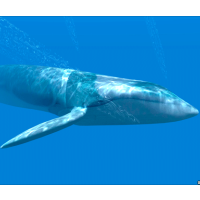Judge Blocks Navy Sonar Testing over “Stunning Number” of Harmed Marine Mammals

U.S. District Judge Susan Oki Mollway did not contain her sarcasm very long in her ruling (pdf) Tuesday that the National Marine Fisheries Service (NMFS) broke the law when it decided U.S. Navy sonar testing off Southern California and Hawaii would have a “negligible impact” on marine mammals.
After fruitlessly looking through reams of legal submissions for any explanation of how the NMFS reached its dubious decision, the judge wrote: “This court feels like the sailor in Samuel Taylor Coleridge’s ‘The Rime of the Ancient Mariner’ who, trapped for days on a ship becalmed in the middle of the ocean, laments, ‘Water, water, every where, Nor any drop to drink.’
The Navy will have to appeal the ruling or resubmit an application to NMFS if it wants to conduct its multi-national testing and training exercises across millions of square miles between Hawaii and Southern California planned for 2016.
An array of conservation groups, including the Natural Resources Defense Council and the Conservation Council for Hawaii, sued to block the Navy shortly after NMFS approved its plan in December 2013 and adopted the Final Environmental Impact Report it had helped shape. That plan copped to the possible inadvertent killing of 155 whales and dolphins and 2,000 serious injuries from explosives.
Earthjustice, which represented the conservation groups in the lawsuit, offered slightly higher numbers that considered other factors, like hearing loss, which can kill over time:
“Millions of others could be left with temporary injuries and significant disruptions to feeding, breeding, communicating, resting and other essential behaviors. In all, the Navy’s plan would cause an estimated 9.6 million instances of harm to marine mammals.”
The judge didn’t necessarily buy all the numbers, but she recognized the potential. The Navy plan would have allowed unlimited killing of marine mammals because it was based on the “anticipated” killings, not an “authorized” amount. The judge wrote:
“Suppose, for example, that the Navy anticipated that a particular exercise would kill one sperm whale in a certain stock of that endangered species, and NMFS found that to be a negligible impact. Under Defendants’ reasoning, NMFS could then authorize the killing of any number of sperm whales, just because only one killing was anticipated.”
The result?
“Allowing any agency to apply this kind of reasoning to authorize the taking of marine mammals could not only mean authorizing the wiping out of endangered and threatened species,” Judge Mollway wrote.
The judge also took issue with the Navy’s assertion that although it needed thousands of miles for training it must have continuous access to millions of miles. “No restriction of any kind is even hypothesized.”
The Navy plan makes little effort to avoid certain areas where particular species are prevalent, threatened or endangered (other than humpback whales), although commenters to the plan made specific requests. “The Navy’s main response was that it was impractical to require that the Navy avoid all marine species habitats. . . . This was not a fair response to those public comments, as the comments were not seeking total avoidance,” Judge Mollway wrote.
–Ken Broder
To Learn More:
Federal Judge: Navy's Training Plans Off Hawaii, California Inadequate (by Audrey McAvoy, Associated Press)
Judge Rules Navy Underestimated Threat to Marine Mammals from Sonar (by Tony Perry, Los Angeles Times)
Federal Judge Tells Navy to Back off North Coast Sonar Testing Plan (by Ken Broder, AllGov California)
Conservation Council for Hawaii, et al, v. Natural Resources Defense Council, Inc, et al (U.S. District Court for the District of Hawaii) (pdf)
- Top Stories
- Controversies
- Where is the Money Going?
- California and the Nation
- Appointments and Resignations
- Unusual News
- Latest News
- California Forbids U.S. Immigration Agents from Pretending to be Police
- California Lawmakers Urged to Strip “Self-Dealing” Tax Board of Its Duties
- Big Oil’s Grip on California
- Santa Cruz Police See Homeland Security Betrayal in Use of Gang Roundup as Cover for Immigration Raid
- Oil Companies Face Deadline to Stop Polluting California Groundwater





